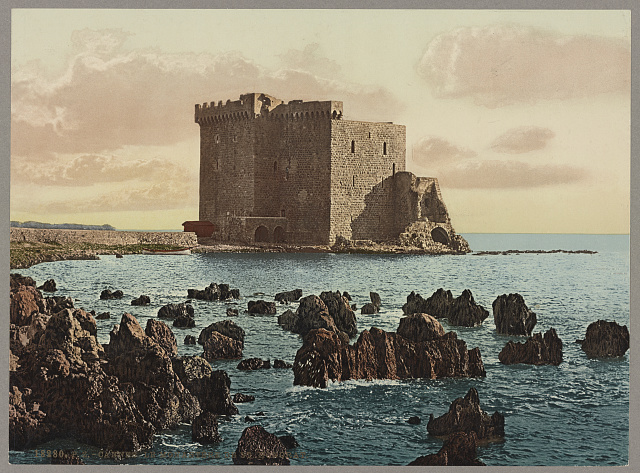Le Monastère de St. Honorat in France, a print created circa 1890–1906.
A love of travel inspires so many photos. A stunning group of images we’re featuring now in our “free to use and reuse” feature on the Library’s home page will take you on a century-old “grand tour” of the world. Our Photochrom Print Collection shows, in color, Europe, the Middle East, Canada, Asia and the South Pacific as they appeared in the 1890s and early 1900s. These pictures have no known copyright restrictions—meaning you can use them as you wish.
What’s a photochrom? The Photoglob Company in Zürich, Switzerland, invented this special color printing method in the 1890s. The Detroit Publishing Company in Michigan quickly licensed the process to be able to publish its views of North America in color. The richly colored images look like photographs but are actually ink-based photolithographs, usually 6.5 x 9 inches. More details about the photochrom process are available on our website.
Like postcards, the photochroms feature subjects that appeal to travelers, including landscapes, architecture, street scenes and daily life and culture. The prints were sold as souvenirs and often collected in albums or framed for display.

A Bedouin rests in front of the Grand Pyramid in Cairo, circa 1890–1900.
The Library of Congress Prints and Photographs Division has significantly expanded the Photochrom Prints Collection over the last 30 years by acquiring mint-condition prints from different sources. Most recently, Marc Walter, the author of several books about photochroms, allowed us to select prints from his personal collection to strengthen our representation of countries such as India, China, Australia, New Zealand and Greece. In 2004, Howard L. Gottlieb generously donated North American views. In 1985, prints of Europe and the Middle East were purchased from the Galerie Muriset in Switzerland. We also received photochrom prints as part of the Detroit Publishing Company Collection in the 1940s and earlier as part of acquiring international views of individual architectural landmarks.
Scroll down for more examples and write a note in the comments section of this post if you find an interesting way to use a digitized image!

Russian Church in Karlsbad, Czech Republic, ca. 1890–1906.

Falls on the Tugela River in South Africa, ca. 1890–1910.

Abbot Reginald’s Gateway and Old Vicarage, Evesham, England, ca. 1890–1900.

Stolzenfels Castle on the Rhine River in Germany, ca. 1890–1900.

Singapore Museum, ca. 1890–1910.

















